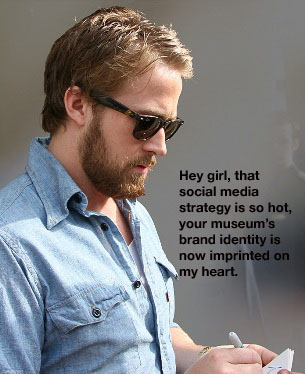Makeup
Museum (MM) Musings is a series that examines a broad range of museum
topics as they relate to the collecting of cosmetics, along with my
vision for a "real", physical Makeup Museum. These posts help me
think through how I'd run things if the Museum was an actual
organization, as well as examine the ways it's currently functioning.
I also hope that these posts make everyone see that the idea of a
museum devoted to cosmetics isn't so crazy after all – it can be done!
 Today's installment of MM Musings will take a quick look at museum branding and how the Makeup Museum may build its brand.
Today's installment of MM Musings will take a quick look at museum branding and how the Makeup Museum may build its brand.
1. The basics
What is a brand, and how is it different than a name or logo? A brand is how an audience perceives your organizaton. This Masters thesis on museum branding defines it thusly: "In a nutshell, brand is the perception of a product, service, or company that people have in their minds. It also is what people say about a product, service, or company. Though a name or logo reflects the brand and is a visual form of each brand, a brand is more than just as a name or logo." Museum marketing expert Jim Richardson agrees: "Your brand is the perception that people have of your organization. It is
formed through everything you do, from how you present your collections
through to the service in your café."
2. Why do museums need a brand?
In order to
compete with other forms of entertainment and even continue their very
existence, in the past 20 years or so museums (and the nonprofit sector
as a whole, for that matter) have shifted to managing themselves like
businesses. "The worth of cultural institutions [is] now mostly based
on
efficient/effective and transparent use of public funds, resulting in
the need for museums to find the perfect balance between high-quality
visit experience and market success in the form of high attendance
levels. Not only that, but museums also face further challenges as they
compete with other leisure providers for audience, donations,
partnerships and sponsorships." (source) A crucial part of being a successful
for-profit is branding.
Additionally, people are looking for ways to interact with a museum's contents. Not content to be mere spectators, museum-goers increasingly use technology to gain a more comprehensive museum experience. Branding is necessary to bridge the gap between a museum's traditional, static role and the visitors who expect a more participatory interaction. "The gradual migration of both museums and visitors into the
buzzing hyper-connected universe of Web 2.0 means that the relationship between
museum and visitor is ever more dynamic. Branding is key in facilitating
museums’ mutation from teaching institutions into cultural platforms for
discussion and sharing." (source)
3. What makes a brand successful?
In order for a brand to be effective, it needs to get to the heart of your organization's mission. As the president of an arts marketing firm says, "You have to tell people what you do, who you are, what your reason
for being is…otherwise, you leave it up to them." Case in point: the Guggenheim Museum. James McNamara, president of the firm Arts Branding, notes, "What the
Guggenheim understands is that each of its museums must embody the
Foundation’s original goals and must embody the attributes that are true
and unique to the Guggenheim brand…effective branding is honed over time and
reflects the original premise, the original idea, the reason for being.
Showcasing contemporary art in 1939 was certainly risky,
envelope-pushing, and trail-blazing at the time – attributes that are
still endemic to the Guggenheim brand today."
4. Branding for the Makeup Museum
How can the Makeup Museum build its brand? Unfortunately, like acquiring a public space, developing a brand identity is a formidable task that will require significant resources – not so much to come up with branding ideas, but to implement them. That said, a case study of the New Museum's re-branding has a concise outline of the process that can be loosely applied to the Makeup Museum. The first step is to determine how a museum's mission can be applied to a brand identity. "If the institution has a well-defined and compelling mission statement, it is in a better position in terms of branding. This is because the first step of branding is to clarify identity including who you are, what you do, and why it matters. Differentiation starts by defining unique identity." Indeed, it's necessary to highlight how your organization is different. "[M]useums are different from one another and its appeal lies
exactly in its distinctiveness…positioning
position (e.g. as the most diverse museum in the area, the most
innovative museum, and so on) is the way in which a museum communicates
its unique values, being crucial to achieve differential advantage so
that the audience understands, appreciates, and is drawn to what it
stands for." (source) This aspect of branding would be pretty easy, as I believe the Makeup Museum is the only contemporary cosmetics museum in the entire U.S.
But what is the overall message that I want to the Makeup Museum brand to communicate? Here's the mission statement (which you can also find under Museum Information).
– Preserve and document contemporary and vintage cosmetic items, both for beauty consumers and the general public.
– Promote these items as legitimate cultural artifacts by examining the design and artistic inspiration behind them.
– Explore the sociological and cultural impact these objects and their advertising have on consumers, particularly women.
– Research and record the history of the beauty industry and the culture therein.
After the message been established, the work of translating this message into a brand and getting it out to the public can begin. This is where things get tricky. How would I get these four critical points into an appealing and effective brand identity? I've come to the conclusion that while I have a good foundation for a brand (clearly defined mission and differentiation), the actual implementation is going to take a lot more research and time than this post allows. So for now I will check out this book by museum marketing expert Margot Wallace, and follow her blog on the same topic.
Any bloggers or museum pros out there – have you given serious thought to the notion of branding?

